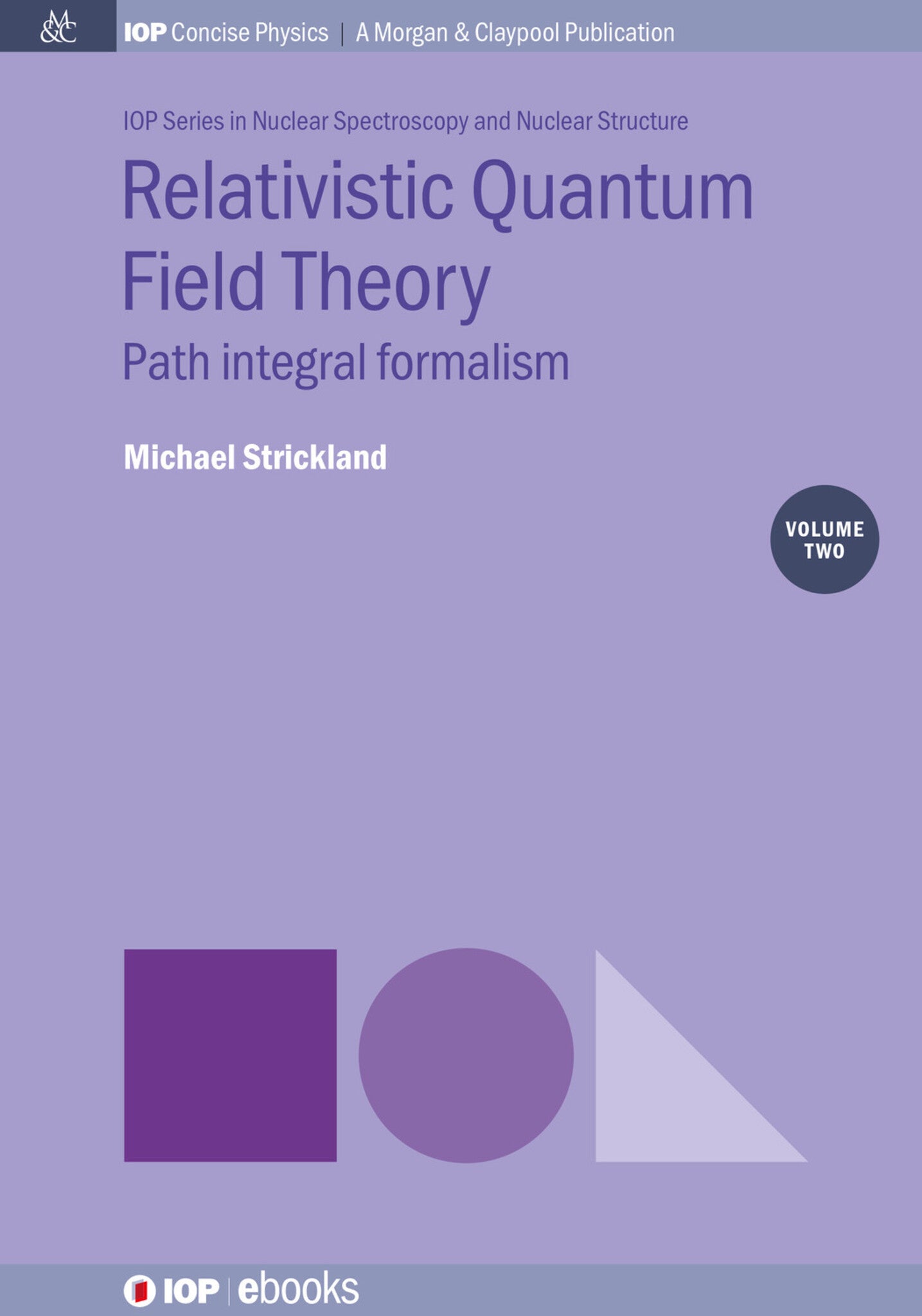We're sorry. An error has occurred
Please cancel or retry.
Relativistic Quantum Field Theory, Volume 2

Some error occured while loading the Quick View. Please close the Quick View and try reloading the page.
Couldn't load pickup availability
- Format:
-
11 November 2019


SCIENCE / Physics / Quantum Theory, SCIENCE / Physics / Nuclear, SCIENCE / Physics / Atomic & Molecular

1 Path integral formulation of quantum mechanics
1.1 The transition probability amplitude
1.2 Derivation of the quantum mechanical path integral
1.3 Path integral in terms of the Lagrangian
1.4 Computing simple path integrals
1.5 Calculating time-ordered expectation values
1.6 Adding sources
1.7 Asymptotic states and vacuum-vacuum transitions
1.8 Generating functional and Green’s function for quadratic theories
1.9 Euclidean path integral and the statistical mechanics partition function
2 Path integrals for scalar fields
2.1 Generating functional for a free real scalar field
2.2 Interacting real scalar field theory
2.3 Generating functional for connected diagrams
2.4 The self-energy
2.5 The effective action and vertex functions
2.6 Interacting complex scalar fields
3 Path integrals for fermionic fields
3.1 Finite-dimensional Grassmann algebra
3.2 Path integral for a free Dirac field
3.3 Path integral for an interacting Dirac field
3.4 Fermion loops
4 Path integrals for abelian gauge fields
4.1 Free abelian gauge theory
4.2 The photon propagator
4.3 Generating functional for abelian gauge fields in general Lorenz gauge
4.4 Generating functional for QED in general Lorenz gauge
4.5 General Lorenz-gauge QED generating functional to O(e2)
4.6 QED effective action and vertex functions
4.7 Ward-Takahashi identities
5 Groups and Lie groups
5.1 Group theory basics
5.2 Examples
5.3 Representations of groups
5.4 The group U(1)
5.5 The group SU(2)
5.6 The group SU(3)
5.7 The group SU(N)
5.8 The Haar measure
6 Path integral formulation of quantum chromodynamics
6.1 The Fadeev-Popov method
6.2 QCD Feynman rules
6.3 Simple example application of the QCD Feynman rules
6.4 BRST symmetry
6.5 Slavnov-Taylor identities
7 Renormalization of QCD
7.1 Divergences in scalar field theories
7.2 Divergences in Yang-Mills theory
7.3 Dimensional regularization refresher
7.4 One-loop renormalization of QCD
7.5 The one-loop QCD running coupling
8 Topological objects in field theory
8.1 The kinky sine-Gordon model
8.2 Two-dimensional vortex lines
8.3 Topological solutions in Yang-Mills
8.4 The instanton
8.5 The Potryagin index
8.6 Explicit solution for a q = 1 instanton
8.7 Quantum tunneling, θ-vacua, and symmetry breaking
8.8 Quantum Anomalies
8.9 An effective Lagrangian for the anomaly
8.10 Instantons and the chiral anomaly
8.11
Perturbation theory for the chiral anomaly



